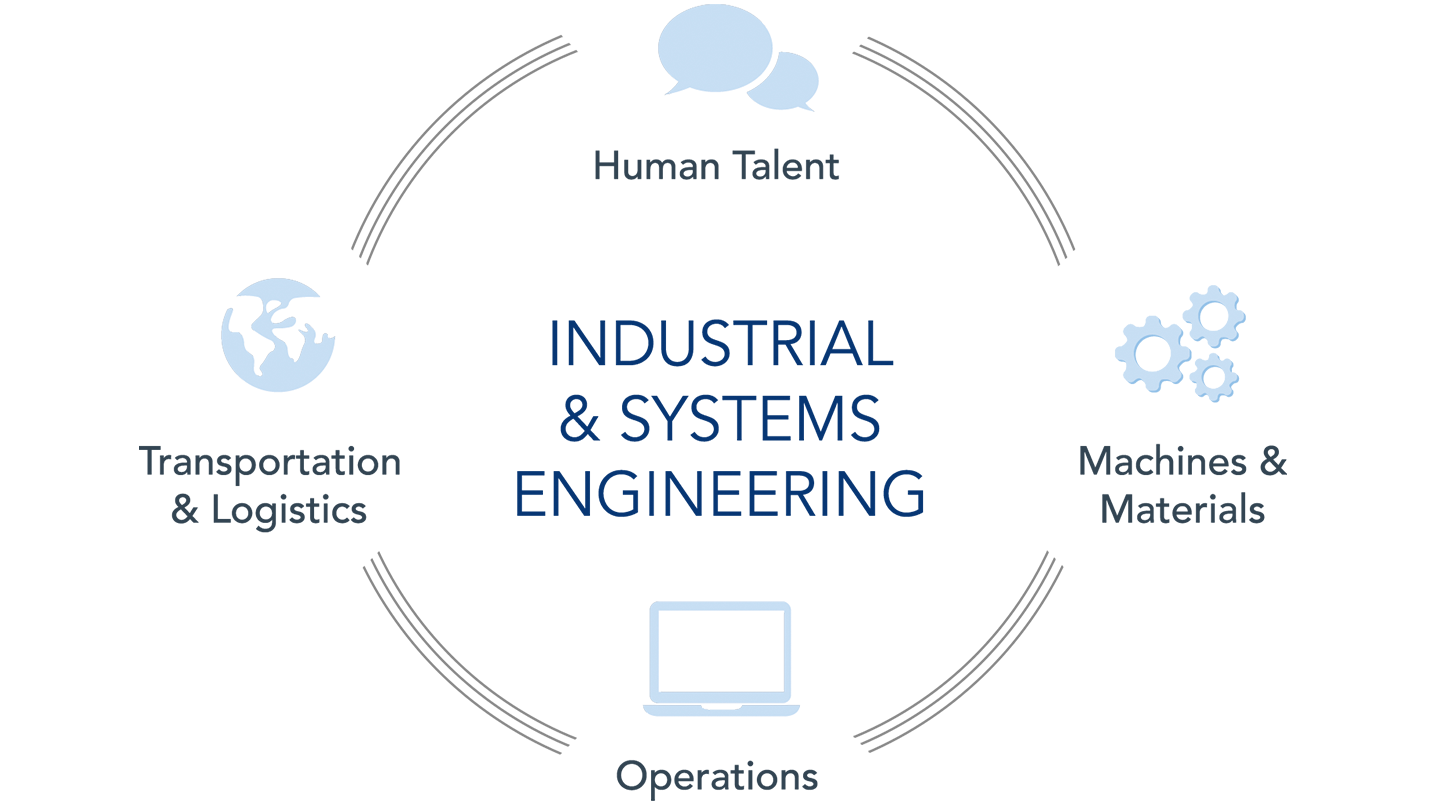
Industrial and systems engineers use their specialized knowledge to create and improve systems within an organization. They often work alongside engineers, researchers, and other multidisciplinary teams, applying their versatile technical knowledge to solve problems and employing a skillset that includes:
- Analyzing organizational or production problems
- Determining requirements to deliver products or services
- Developing or contributing to the development of new processes using statistical data, models and simulations, and human factors
- Designing and improving supply chains for the physical distribution of goods and services
- Identifying cost-effective locations for the manufacturing of products
- Leading quality and safety projects designed to enhance worker safety, comfort, and productivity
Career Path Possibilities
Capable industrial and systems engineers are in demand. ISEEM graduates can choose from a wide array of career fields, including aerospace, government agencies, defense, electronics, automotive, manufacturing, and health care.
An ISEEM professional may:
- Create product flow designs for a manufacturing plant
- Utilize computer simulation to test various alternative design decisions
- Assist in designing inside compartments for the next space shuttle, considering the limited space requirement and human interface with the controls
- Design or track a total process system to help coordinate all functions for a successful end product
- Track quality using statistical methods
Some of the valuable, bottom-line results attributed to industrial engineers include:
- Helping companies put GoGreen standards into action by applying energy audit data to energy-saving strategies
- Devising real-time countermeasures to cut wait times for rides (and enhance the guest experience) at major theme parks
- Improving the quality of care for critically ill patients by assisting on facility redesigns that optimize nursing staff and treatment space
- Designing ergonomically friendly workstations – from factory floor to office cubicle – that reduce occupational injuries and pain due to repetitive motion, eyestrain, and excessive bending and reaching
- Contributing innovative concepts to advance aerospace and defense missions, including new equipment designs that improve soldier safety and product build strategies that get new equipment from factory to field in a timely manner
- Improving package delivery times by simplifying supply chain and material flow, getting online orders from the warehouse to your door quickly and accurately